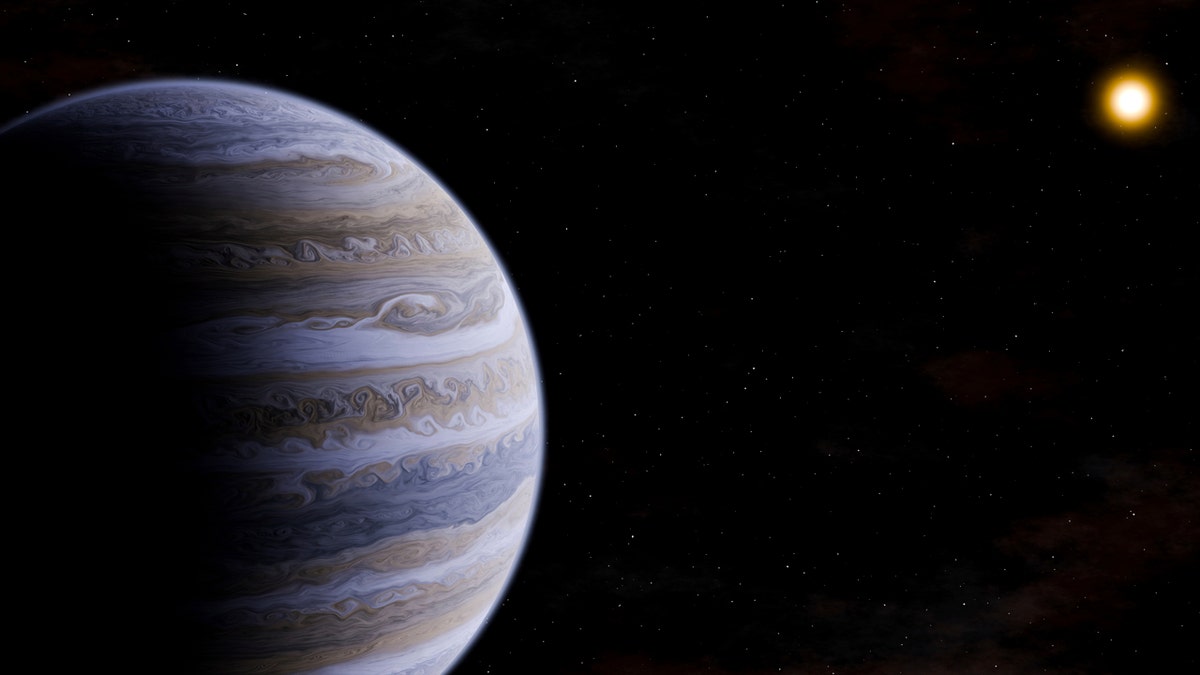Elon Musk moving SpaceX headquarters from California to Texas
'Domestic Extremist' author Peachy Keenan and Dr. Sheila Nazarian joined 'Fox News @ Night' to discuss why he is ditching the Golden State and their take on the Secret Service failures following the Trump assassination attempt.
- The Webb Space Telescope spotted a gas giant roughly the same diameter as Jupiter, but with six times the mass, orbiting a neighboring star, Epsilon Indi A. It might take this planet as long as 250 years to complete an orbit around its star.
- The planet and star are about 3.5 billion years old, 1 billion years younger than our own solar system, but still considered old and brighter than expected.
- The Webb telescope, launched in 2021, is the biggest and most powerful astronomical observatory ever placed in space.
A super Jupiter has been spotted around a neighboring star by the Webb Space Telescope — and it has a super orbit.
The planet is roughly the same diameter as Jupiter, but with six times the mass. Its atmosphere is also rich in hydrogen like Jupiter’s.
One big difference: It takes this planet more than a century, possibly as long as 250 years, to go around its star. It’s 15 times farther from its star than Earth is to the sun.
WHAT TO KNOW ABOUT THE ’DEVIL COMET’ AFTER ITS CLOSEST PASSING OF EARTH IN 71 YEARS
Scientists had long suspected a big planet circled this star 12 light-years away, but not this massive or far from its star. A light-year is 5.8 trillion miles. These new observations show the planet orbits the star Epsilon Indi A, part of a three-star system.
An international team led by Max Planck Institute for Astronomy’s Elisabeth Matthews in Germany collected the images last year and published the findings Wednesday in the journal Nature.
Astronomers directly observed the incredibly old and cold gas giant — a rare and tricky feat — by masking the star through use of a special shading device on Webb. By blocking the starlight, the planet stood out as a pinpoint of infrared light.

This illustration provided by the Max Planck Institute for Astronomy depicts a cold gas giant orbiting a red dwarf. Scientists had long suspected a big planet orbited the star Epsilon Indi A, but not this massive or far from its star. (T. Müller (MPIA/HdA) via AP)
The planet and star clock in at 3.5 billion years old, 1 billion years younger than our own solar system, but still considered old and brighter than expected, according to Matthews.
The star is so close and bright to our own solar system that it’s visible with the naked eye in the Southern Hemisphere.
Don’t bet on life, though.
"This is a gas giant with no hard surface or liquid water oceans," Matthews said in an email.
It’s unlikely this solar system sports more gas giants, she said, but small rocky worlds could be lurking there.
Worlds similar to Jupiter can help scientists understand "how these planets evolve over giga-year timescales," she said.
CLICK HERE TO GET THE FOX NEWS APP
The first planets outside our solar system — dubbed exoplanets — were confirmed in the early 1990s. NASA’s tally now stands at 5,690 as of mid-July. The vast majority were detected via the transit method, in which a fleeting dip in starlight, repeated at regular intervals, indicates an orbiting planet.
Telescopes in space and also on the ground are on the hunt for even more, especially planets that might be similar to Earth.
Launched in 2021, NASA and the European Space Agency’s Webb telescope is the biggest and most powerful astronomical observatory ever placed in space.





















